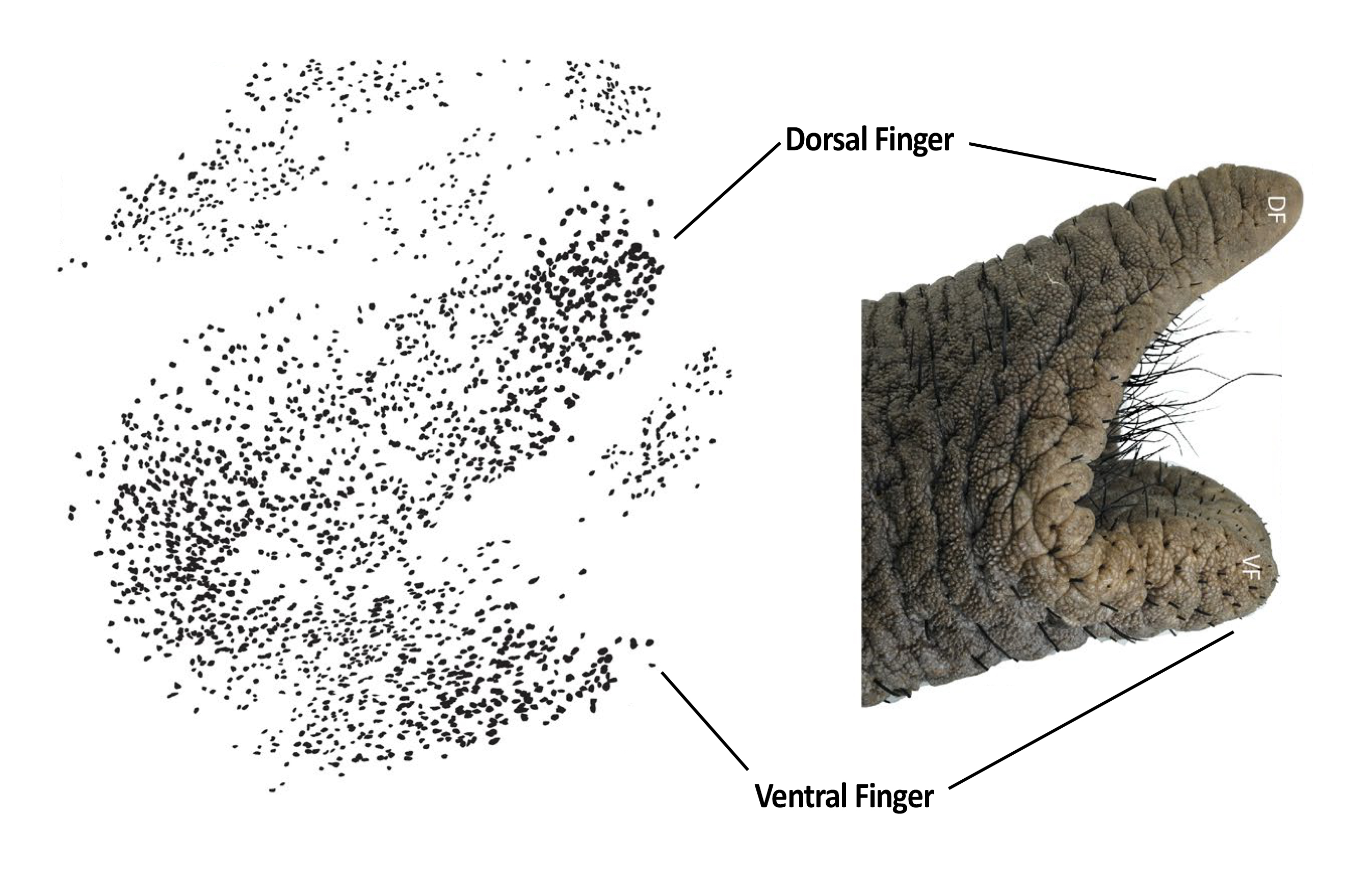Trunk dexterity explained: Berlin scientists decipher facial motor control in elephants
Elephants have an amazing arsenal of face, ear and trunk movements. The trunk consists of far more muscles than the entire human body and can perform both powerful and very delicate movements. A team of scientists from the Humboldt University of Berlin and the Leibniz Institute for Zoo and Wildlife Research (Leibniz-IZW) now examined the facial motor nucleus of African and Asian elephants, the brain structure that controls the facial muscles of these animals. This nucleus contains more facial motor neurons than in any other terrestrial mammal, the scientists show in a paper published in the journal “Science Advances”.

Nerve cells in the African elephant’s facial motor nucleus (left). The facial nucleus is the brain structure, which controls the muscles of the face. Trunk tip of an African elephant with the two trunk fingers (right). Source: Kaufmann et al, Science Advances
Bernstein member involved: Michael Brecht
One of the most remarkable body parts in the animal kingdom is the elephant trunk. It is extremely muscular and strong, containing far more muscles than the entire human body, and yet it is very sensitive and capable of carefully performed, finely tuned motor actions. The way elephants use the tip of their trunk strongly resembles a human hand, and they actually have so-called fingers at the tip. Lena Kaufmann and colleagues in Michael Brecht’s laboratory at HU Berlin and Thomas Hildebrandt’s Department of Reproduction Management at the Leibniz-IZW for the first time have now studied and described in detail the so-called elephant facial nucleus – the brain structure responsible for controlling the elephants’ facial muscles, from the ears to the tip of the trunk.
“The elephant’s facial motor nucleus is unique in several ways. For example, it contains more facial motor neurons than all other terrestrial mammals“, says first author Lena Kaufmann (HU Berlin). The scientists counted about 54,000 neurons in the facial nucleus of Asian elephants (Elephas maximus), whereas the African savanna elephant (Loxodonta africana) even has about 63,000. The team attributed the higher number of facial nucleus neurons in African savanna elephants to their larger ears and more elaborate trunk tip. „African savanna elephants have two so-called fingers at the trunk tip with which they grip objects“, says Thomas Hildebrandt (Leibniz-IZW). „This kind of pincer grip requires much dexterity with the trunk tip. Not surprisingly, we see in the brains of African elephants prominent neuron clusters for the control of the fingertips.“ Asian elephants have only one finger and tend to wrap their trunk around objects; hence their finger-tip is less prominently represented in their brain.
“The elephant facial nucleus is one of a kind”, says Michael Brecht. “It’s not just the huge number of neurons. We also observed size gradients of neurons along the trunk representation that we do not see in other mammals. The observed giant elephant neurons probably arise from the need to extend very long signalling structures into the trunk.”




